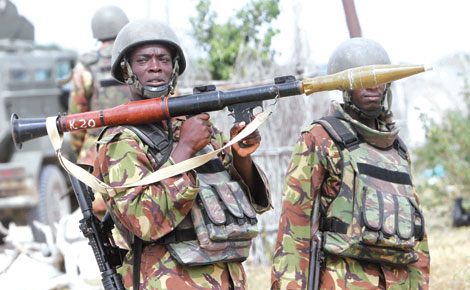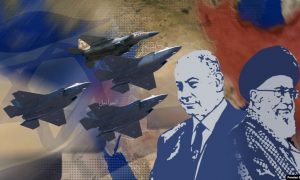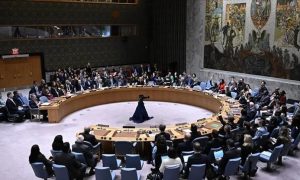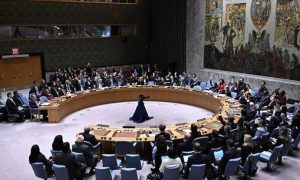
No nation has benefited from protracted warfare- Sun Tzu |
Mogadishu, 18 January 2016: Our mission in Somalia, I believe, has run its course. It is now time to change tack and pull out of there. The high points of this effort have been realized notably the fall of Kismayu and the creation of a working, albeit tenuous buffer zone in Jubaland. A new strategy should evolve to match the rapidly changing dynamics.
If the terror incidences of the past three years at home taught us anything, perhaps it is that an urgent adjustment of our Somalia policy is called for. The fact of the matter is in the last three years, hundreds of Kenyans have been lost to actions of terrorism within our borders. That number is vastly higher than anything we suffered in the run up to our armed forces marching into Somalia.
Fighting insurgencies, especially against a cancerous one as Al Shabab in Somalia, is no doubt precarious proposition. The set objectives often tend to get thrown off balance by spates of unintended consequences as it continuously mutates and becomes increasingly gruesome. That is where we are today.
As things stand now, it seems like more than three years down the line after getting in, the goals are not only seeming fuzzier and shifting, they are outright nebulous and not as clear-cut as we understood at the outset. At this point, there is a danger of the whole effort becoming a quagmire.
Though this was an effort to seek out and destroy terror havens in some parts of Somalia – and it is – the Somalis who want nothing to do with Al Shabab may have gladly welcomed us then, it is not improbable that after three years, even they may have begun to perceive our presence as occupation. Jihadis like Al Shabab are adept at exploiting such dynamics.
Worse for us, our involvement in Somalia follows a decade of heightened Jihadi conflicts in the Middle East. Jihadi groups like Al Shabab have closely observed and in some instances gained invaluable lessons and experiences from those conflicts. The notable strategy that has characterized the conflicts with Jihadis has been drawing in forces they are up against, with a view to bogging them down, bleeding them with unconventional strategies while trying to influence their adversary’s public sentiment to undermine the war effort. The tech savviness of Al Shabab has been at it for a long time now.
Perhaps a look at United States involvement in Vietnam should serve as a cautionary tale for our Somali military campaign. Albeit the conflicts are diametrically different, there are parallels that should inform our effort as they bear striking semblance.
America entered Vietnam to stop the march of communism across South East Asia. In that conflict, a vastly superior modern army with inordinate firepower stood arrayed against a ragtag insurgency, the Vietcong, closely directed by the communist North Vietnamese Army.
In the early part of the conflict, it looked very much an open and shut case if obscenely lopsided. However, there was of course the neglected fact that ten years prior, the Vietnamese had soundly routed the French at Dien Bien Phu. Americans should have taken heed before marching in.
It is also instructive that the Americans have been giving Somalia a wide berth since the Black Hawk incident in 1993 where fighters shot down American helicopters and dragged dead soldiers on the streets of Mogadishu.
In the early sixties though, the super power army was going to march into a Third World South Vietnam, liquidate the communist insurrection, prop a stalwart South Vietnamese ally and make it a bulwark against the communist North Vietnam thus stopping the march of communism in its tracks.
The Vietcong had other ideas for the Americans. Just like the Al Shabab now seem to harbor for any army getting into Somalia, the Vietcong was not planning on standing up against a vastly superior fighting force and defeating them in open warfare. Rather, their strategy that ominously resembles what Al Shabab espouse, involved drawing the enemy army in, bogging them down, protracting the conflict indefinitely while at the same time bleeding the enemy with spectacular opportunistic attacks and playing to influence their adversaries’ public sentiment against the war.
As the Vietnam conflict dragged into months and then years, with Americans not losing a single major battle, it became impossible to change course as they got sucked in further and further into the conflict.
Frustrated at not being able to rout an enemy that for the most part finely blended medieval weaponry – boasting an arsenal that included punji sticks, traps, snares and literally burrowing underground – with modest modern weaponry, the Americans unleashed colossal firepower that laid to waste vast swathes of Vietnamese jungle. Yet the insurgency persisted and wore out the big power.
At the height of the conflict in Vietnam in the late 1960s, with America blanketing the jungle country with half a million troops, and sending home as many as 300 body bags of fallen soldiers a week, the super power was gradually forced to withdraw from the costly misadventure. Just as confounding, the Vietcong marched on Saigon in April 30 1975 and christened the city Ho Chi Minh, effectively attaining what the Americans fought to prevent, and failed – unifying Vietnam under communism- after a decade of the bloodiest conflict of the cold war.
Yes, it seems that where we are in Somalia right now calls for a pause. We are realizing that we are going up against an enemy that has mastered the art of drawing the adversary in and stoking unfavorable public sentiment against the war effort in our populace all the while deploying tactics and strategies far away from the battle fields.
Their Jihadi philosophy resides in the hearts of its adherents. Unfortunately, it is insidiously metastatic and often, it is impossible to send a standing army against it owing to its versatile and ghostly manifestation.
The best approach will be to draw back and increase vigilance at the border and in the most vulnerable places at home where they have perfected their nefarious campaign of terror. That is on the streets of our cities, the malls, quarries and buses and even on university campuses.
It seems reasonable that we should consider the draw down from Somalia and then burnish border patrol and response to threats either at the border or close to vulnerable cities and the so called soft targets.
Doing this will deny the Al Shabab a constant target in Somalia that it uses recruit and whip up sympathy by playing up nationalistic pretenses.
In any case, how will victory in Somalia with our current strategy look like? Ferretting out every Jihadi in the vast swathes of Somali wasteland, beating them into submission and making them change their Jihadi ways? If that is the case, this century will be much older by the time we round them all up.
What is more, the Al Shabab’s malignant strategy seems to have hit pay dirt with its inordinate ability to radicalize youth within Kenya’s body politic. This means that the deadliest threat we face at the moment is not the odd militia going toe to toe with the KDF soldiers in the underbrush of Somali country. Rather, as it is abundantly clear now, it could be the next door neighbor at Mamlaka Hall or the Nyayo Hostels.
Changing course now will save us a long costly engagement in Somalia with no end in sight and no tangible results.
.
The Writer is an Associate Professor of Education at St Bonaventure University, New York.
_____________________________________________________________________________________
Xafiiska Wararka Qaranimo Online | Mogadishu, Somalia
_____________________________________________________________________________________Advertisement
_____________________________________________________________________________________







